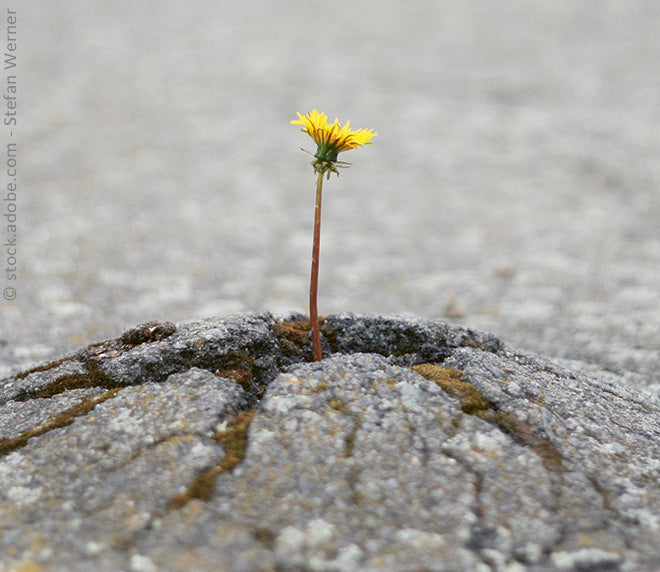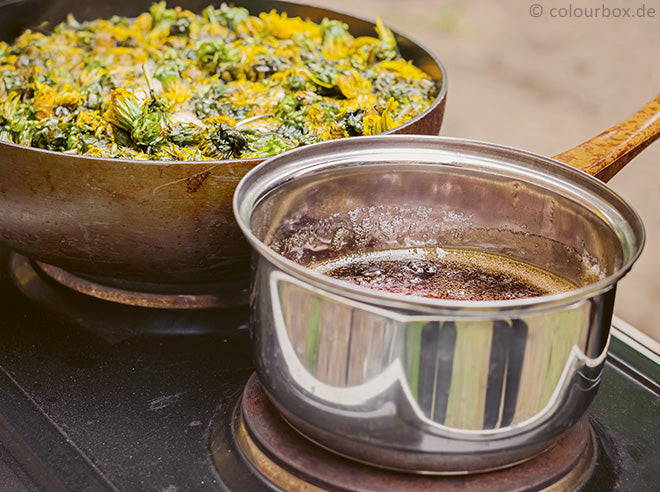
Grape and grapevine: medicinal plant of the year 2023 and a "powerhouse" of healthy ingredients! Interview with Barbara Simonsohn
Grape and grapevine: medicinal plant of the year 2023 and a "powerhouse" of healthy ingredients! Interview with Barbara Simonsohn
"The grape is one of the oldest cultivated plants of mankind. Even in the Stone and Bronze Ages, wild grapes served our ancestors as valuable food. Now the grapevine has been honored as 'Medicinal Plant of the Year' because it offers us a wealth of healthy ingredients and all parts of the plant - the fruit, the seeds and the leaves - have medicinal properties." The successful guidebook author and superfood expert Barbara Simonsohn , author of the compact guidebook " Grapes and Grapes - Medicinal Plants of Folk Medicine ", was surprised after her book research at the diverse healing effects and uses that the "queen of fruits" offers us.
The grapevine was named “Medicinal Plant of the Year 2023.” How did this award come about and what does it mean to you as an expert in “superfoods”?
Barbara Simonsohn: To be honest, I was surprised. I love grapes and raisins and have vines in my garden and allotment in Hamburg. But I hadn't expected that such a tasty fruit as grapes would be given such an honor. I knew that grapes are healthy, but I didn't know before I researched the book that they are so full of healthy ingredients. And I had never known before that vine leaves are also a "powerhouse" of vital substances. Fresh or dried vine leaf tea is a healthy delicacy, and fresh leaves give a smoothie a particularly delicious flavor. Grapes and vines have been awarded for their diverse healing properties and for the fact that the entire plant with its fruit seeds has healing properties. I was delighted that I was able to learn something important as a superfood expert for exotic and local superfoods.
Grapes and vines are among the oldest cultivated plants in human history and have been used as food and luxury items for thousands of years. What is their significance for folk medicine?
Barbara Simonsohn: The grape is actually one of the oldest cultivated plants of mankind. Even in the Stone and Bronze Ages, wild grapes served as valuable food for our ancestors. After people became sedentary around 12,000 years ago, the first cultivated vines emerged when our ancestors propagated particularly tasty varieties through cuttings. Grapes were already being cultivated in Egypt, Assyria and Mesopotamia around 5,000 BC; in the “crescent” on the Euphrates and Tigris, the vine was sacred, and in ancient Egypt the meaning of “grape” and “life” was identical. Hippocrates already recommended grapes as a food and medicine, and wine only in small quantities. Pliny the Elder, a Roman polymath, devoted a lot of space to grapes in Book 13 of his “Historia Naturalis” because of the health benefits of all parts of the plant. In the 18th and 19th centuries, grape cures became very popular and were used to cure all kinds of ailments, including cancer. Today, you can still do grape cures in Italy, France or Germany, but of course you can also do them cheaply at home.
Your new compact guide is not about winemaking, but about an extremely versatile fruit whose richness exceeds anything that might be “true” in wine. What makes the grapevine and its fruit so special?
Barbara Simonsohn: The grape cleanses and nourishes at the same time. Its valuable fruit acids and antioxidants effectively purify the body of "waste from affluence". At the same time, its ingredients build healthy tissue. The grape, the queen of fruits, is deliciously sweet, but has a low glycemic index of 45 and a glycemic load of just 7.2, making it the ideal fruit for diabetics. Fruit acids such as tartaric, malic and citric acid stimulate the excretory organs and promote purification. The grape contains a lot of potassium and thus contributes to the acid-base balance. The calcium content prevents osteoporosis and ensures healthy teeth. The astonishingly high iron content ensures healthy blood formation and the transport of oxygen in the body. Grapes contain valuable trace elements such as copper, magnesium and zinc, and also contain the nerve-strengthening B vitamins (except vitamin B12), including a considerable amount of folic acid, as well as vitamins C and E. What makes grapes so special are the many antioxidants such as quercetin, catechins and ellagic acid, especially in the fruit skin and seeds. These bioactive substances are fire extinguishers for "wildfires" caused by destructive free radicals, and protect against cancer and other diseases of civilization, as well as premature aging processes.
The areas of application for all parts of grapes are as varied as the ingredients themselves. For which ailments can the fruits, flowers, leaves, seeds and stems be used effectively?
Barbara Simonsohn: My A to Z of healing effects got longer and longer... Ingredients in grapes have been proven to prevent brain degeneration and thus Alzheimer's and dementia. Arthritis and other inflammatory diseases can be cured. It should be remembered that inflammation is involved in almost all disease processes. Grapes help diabetics to lower their blood sugar levels; they help with colds and viral and bacterial infections, strengthen the immune system, improve concentration, have a mood-enhancing effect, work against constipation, promote wound healing, prevent wrinkles and pigment spots, ensure strong nerves and healthy and beautiful hair.
Since ancient times and up until recently, so-called grape cures have been recommended to promote digestion and metabolism as well as detoxification. What does this mean and what are your experiences with the grape cure?
Barbara Simonsohn: During grape cures, you eat grapes - and nothing else. A grape cure can be done for three days or more. The effects are amazing, as studies have shown and as I was able to experience myself. A physical and mental renewal and rejuvenation takes place. The eyes become clearer, thoughts more positive, fat deposits disappear, digestion is optimized, and eating habits improve sustainably. Grape cures have a long tradition in France and Germany, for example. A medically supervised study with 500 subjects showed impressive results. Most participants had no problem sticking to the cure for ten days, especially since they were allowed to eat as many grapes as they wanted. Everyone felt energized, rejuvenated, many got rid of illnesses, and they experienced more joy in life. During and after my first grape cure in autumn 2022, I was able to achieve peak mental and physical performance, everything was easy for me, mental and physical ballast had fallen away from me. Thanks to these positive experiences, I will be doing a grape cure every year, during grape season and with organically grown grapes from my own garden. You can read about which delicious grape varieties are suitable for growing in cooler climates and even on the balcony in my book.
Thanks to its fruit acids, vitamins and secondary plant substances, grapes are a beautiful ingredient both internally and externally and are the basis for healthy nutrition and natural cosmetics. What should you pay particular attention to when preparing your own?
Barbara Simonsohn: The grape contains the powerful antioxidants OPC - oligomeric proanthocyanidins - and resveratrol. These two substances rejuvenate the skin, reduce wrinkles and pigment spots and also ensure strong and shiny hair. Cold-pressed grape seed oil is a wonderful body care product and is quickly absorbed. Skin blemishes and age spots can disappear. Resveratrol also promotes the longevity of skin and hair. I would use the power of the grape as a cosmetic and remedy, for example for acne, not only externally, but also internally by eating dark grapes with seeds, using grape seed oil in the kitchen and taking OPC and resveratrol from grape seeds during the grape-poor season. The power of the grape works optimally when used internally and externally. You can find delicious grape recipes such as grape-mango cream or delicious smoothies with grapes or vine leaves in my book.
Book tip:
Barbara Simonsohn: Grape and grapevine - medicinal plants in folk medicine. Tried and tested applications, recipes and recommendations: fruit, grape juice, vine leaves, grape seed oil, OPC/grape seed extract, etc. Compact guide . Mankau Verlag 2023, flapped paperback, full color, 11.5 x 16.5 cm, 158 pages, 12.00 euros (D) | 12.40 euros (A), ISBN 978-3-86374-688-9
Link recommendations:
More information about the book “Grapes and vines – medicinal plants of folk medicine”
To the reading sample in PDF format
More about the author Barbara Simonsohn
Our social networks – for questions, criticism, suggestions











